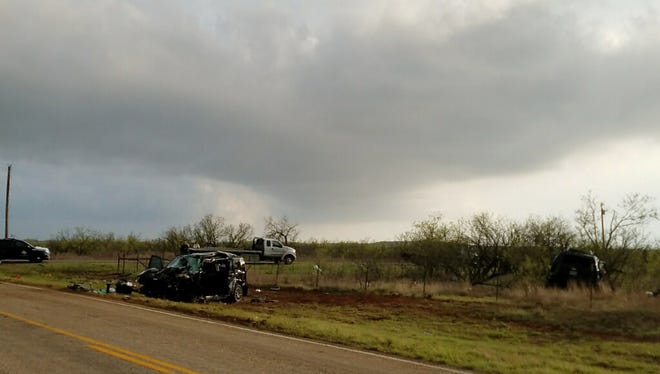Storm chaser deaths are rare, but just how safe is tornado hunting?

With the deaths of three storm chasers Tuesday, many wonder: how safe is storm chasing?
Storm chasing deaths remain extremely rare and most, including the latest incident, are due to car accidents rather than a direct hit from the tornadoes themselves.
Three storm chasers, including two contractors for The Weather Channel, were killed Tuesday when their vehicles collided at a rural crossroads in West Texas. One of the cars involved ran a stop sign before slamming into the other vehicle.
Storm chasers have become a staple of weather coverage on cable TV networks such as The Weather Channel, CNN, MSNBC and Fox News. The risky practice involves driving equipment-laden vehicles as close as possible to potential tornadoes and other violent weather and sending live video feeds and eyewitness accounts as storms approach and unleash their fury.
Storm chasing exploded in popularity over the past two decades, spurred on in part by the 1996 movie Twister starring Bill Paxton. After Paxton's death last month, nearly 200 storm chasers paid tribute by spelling out his initials using GPS coordinates on a map depicting the heart of Tornado Alley.
During severe weather outbreaks, the Plains or South can become clogged with scores of vehicles crammed with scientists, weather enthusiasts, tourists and thrill seekers, all armed with mountains of electronics to hunt tornadoes.
The greatest danger lies in those reckless few who take lots of risks and have little to no scientific training.
"Extreme (or "outlaw") storm chasing has become relatively widespread, likely in part because of what people routinely see in entertainment media," storm chaser and retired National Weather Service meteorologist Charles Doswell noted on his blog last year.
"It's not reflective of the majority of chasers, but extreme chasers apparently like to think of themselves as 'above' most other chasers," he said. "The whole notion of being an 'extreme' chaser is considered in those circles as a badge of honor, worn with pride by those willing to do virtually anything to catch a sensational event, right up to the edges of death."
The worst day in the history of chasing was May 31, 2013, when a ferocious tornado killed three veteran chasers — Tim Samaras, 55, his son, Paul Samaras, 24, and chase partner Carl Young, 45, near El Reno, Okla.
Storm chasers die in car crash as they pursue tornado in Texas
Longtime storm chaser David Hoadley, who was there that day, was a friend of the Samarases. To his knowledge, that's the only time a tornado has killed storm chasers. The twister also killed five other people.
"Nobody that day knew what was going to happen when we started," Hoadley said. "We knew it was going to be a big tornado, but that anyone would lose their life was the last thing in our minds."
That twister, which was about a mile wide, crossed interstate highways where traffic was jammed and motorists were unable to get away. Weather Channel storm expert Greg Forbes said there were probably two dozen storm-chasing vehicles in the area at the time.
Doswell said too many people are eager for their 15 minutes of Internet fame.
"The dominant theme seems to be to get your video on TV and/or to post it on Facebook to show the 'adventure' of being caught in a tornado, even when the video is pretty clear evidence in some cases that they're not in the tornado," Doswell said.
"They often like to claim they're out chasing in order to save lives — which is pretty evidently ludicrous," he added. "No, for these egomaniacs, it's all about shouting themselves into fame and fortune, pushing their foolishness onto our TVs and computer screens so that they become renowned — if not famous, then infamous for their foolishness."
But Washington Post Capital Weather Gang forecaster/photographer Ian Livingston said such recklessness is not the norm.
"There are many misconceptions about storm chasing that need to be set straight," he wrote on the Capital Weather Gang blog in June. “The plains are not overrun by storm-chasing caravans every spring. There are not thousands of cars on the road preventing first responders from doing their jobs. We do not do it for the money. We do not disrupt local residents’ lives.”
Contributing: Gregg Zoroya, USA TODAY; Associated Press